KLACTOVEE Edition
In der Klactovee Edition erscheinen mehrheitlich Aufnahmen von "Blowing Sessions", die in altmodischer Manier in ein paar Stunden eingespielt werden: alle Musiker*innen in einem Raum, keine Kopfhörer. Das Repertoire besteht zur Hauptsache aus Stücken aus dem "Great American Songbook" und aus dem Jazz-Kanon.
Eine zentrale Inspirationsquelle für die Klacotvee Edition sind Alben, die Don Schlitten für die US-Labels Prestige, Muse, Cobblestone und Xandau produziert hat (Zitat Schlitten: "The end result has to be that the music is cooking, that's all. And my job would have to be to figure all that out in front").
Der Leitspruch der Klactovee Edition stammt von Thelonious Monk und lautet: "You've got to dig it to dig it, you dig?" Die Klactovee Edition wird von Tom Gsteiger programmiert und produziert.
RELEASES
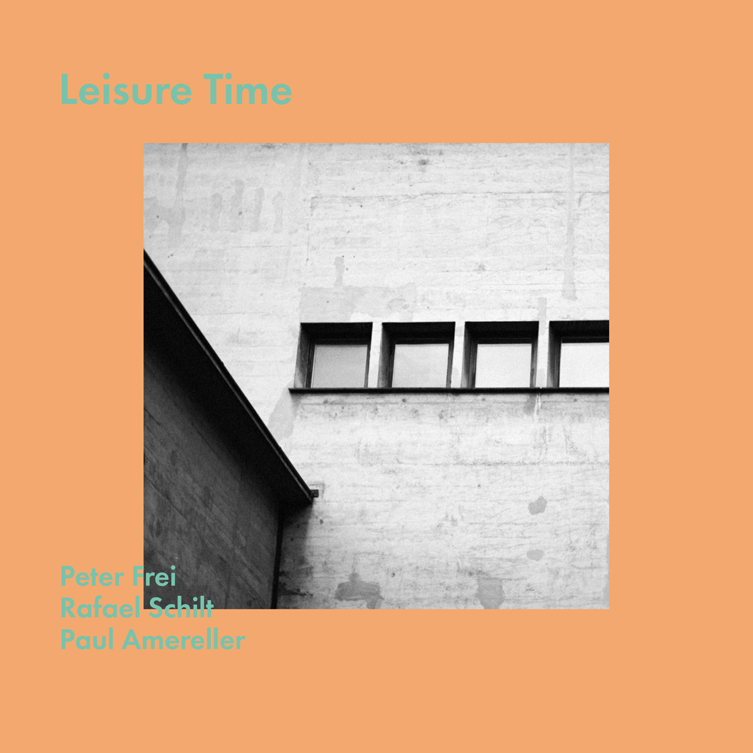
KLACTO10 Rafael Schilt Tenor Saxophone.
Peter Frei Double Bass.
Paul Amareller Drums & Cymbals.
Nicole Pfister Artwork.
Release Date 2023 January

KLACTO9 Donat Fisch Tenor Saxophone. Alto Saxophone.
Philipp Schaufelberger Electric Guitar.
Bänz Oester Double Bass.
Jorge Rossy Drums & Cymbals.
Nicole Pfister Artwork.
Release Date 2022 October
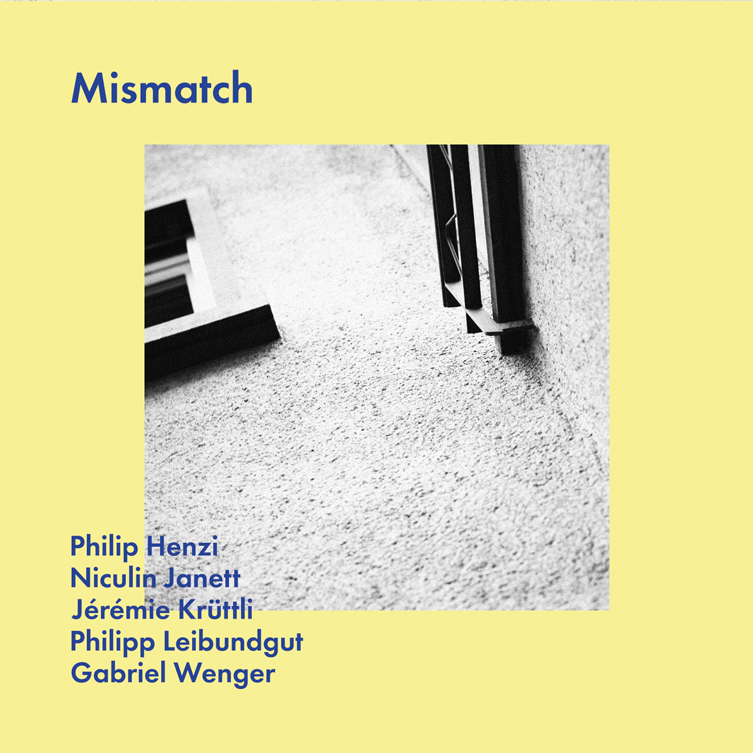
KLACTO8 Philip Henzi Piano.
Niculin Janett Alto Saxophone.
Gabriel Wenger Tenor Saxophone.
Jérémie Krüttli Double Bass.
Philipp Leibundgut Drums & Cymbals.
Nicole Pfister Artwork.
Release Date 2022 July
LINER NOTES
MISMATCH
Anders anders.
Die Bezüge zu Lennie Tristano in der heutigen Musikwelt sind vielfältig, direkt und indirekt nachvollziehbar.
Seine furchtlose und brilliant umgesetzte Ausweitung des im Jazz denkbaren Wortschatzes - kaum hatte dieser seine vielleicht grössten Sprung in der Bebop- Revolution vollzogen - auf rhythmischer, melodischer und harmonischer Ebene und durch seinen konsequenten Fokus auf die Improvisation hat neue Möglichkeiten aufgezeigt und seine Zeitgenossen und nachfolgende Generationen stark beeinflusst. Er kann ebenso als Pionier der Jazz-Lehrtätigkeit wie der freien Improvisation und des Gebrauchs von Musiktechnologie in Multitrack-Technik gelten. Sehr vielfältig ist auch die Rezeption seines überschaubaren, aber dichten Werks: durch seine konsequent antikommerzielle Haltung kann er als Blaupause für den Typus des - im Sinne der Europäischen Kunstmusik - hochstehenden Avantgarde – Musikers herhalten, welchem oft auch ein Hauch des tragischen Helden anhaftet.
Tristano und seine wichtigsten Mitstreiter Lee Konitz und Warne Marsh sind Vorbilder für eine Reihe von Purist*innen, die seine Musik und ihre Auslegung gern für sich selbst beanspruchen, für andere wieder ist er eine ergiebige Quelle für etwas «andere» Ideen und Klänge, eine Position die er interessanterweise mit Thelonious Monk teilt, die
beiden Musiker schätzten sich gegenseitig wenig. Wenn man die Entwicklung des Jazz als ein Kontinuum von Ideen anschaut, sind es nur wenige Schritte von Lennie Tristano zB via Paul Bley und Charles Mingus zu Avantgarde und Free Jazz, via Bill Evans, Herbie Hancock und Keith Jarrett zu einem grossen Spektrum heutigen Jazzschaffens und via Clare Fischer, in seinem eigenen Spiel vielleicht Tristano’s direktester musikalischer Nachkomme, über seine Vokalarrangements, innovative Latin-Gruppen bis hin zu seinen diskreten, aber durchaus mutigen Arrangements für Michael Jackson, Chaka Khan und insbesondere Prince.
Lee Konitz und Warne Marsh wiederum sind für den Kreis um Mark Turner und Kurt Rosenwinkel wichtige Vorbilder. Interessante Figuren sind auch seine ehemaligen Studierenden, Charlie Banacos, ein dem grossen Publikum unbekannter aber enorm einflussreicher Jazzpädagoge, der Jazz-Influencer Dave Frank und die brilliannte Jo Anne Brackeen. Die Liste lässt sich beliebig weiterführen.
Es verwundert also nicht, dass jede neue Generation von Jazzmusiker*innen Tristano wiederentdeckt und auf ihre Weise interpretiert. Die Musiker auf diesem Album tun das mit viel Spielfreude, die besonders an die Aufnahmen mit Lee Konitz und Warne Marsh erinnert, eine Musik, deren sorgloser Sinn für Abenteuer und Freude an der reinen Erfindung auch heute noch besticht. Der Beizug der Hammond-Orgel bringt eine neue Klanglichkeit und befreit sie in diesem Kontext gleichzeitig von ihr gerne anhaftenden Klischees. Für mich ist diese Band ein gelungenes Beispiel für die Annäherung an ein grosses, bereits oft und nicht immer ideologiefrei diskutiertes Vorbild, ohne Beweihräucherung oder Anspruch auf historische Korrektheit, dafür mit Neugier, Fantasie, Interplay und Groove.
Michael Beck (Bern)
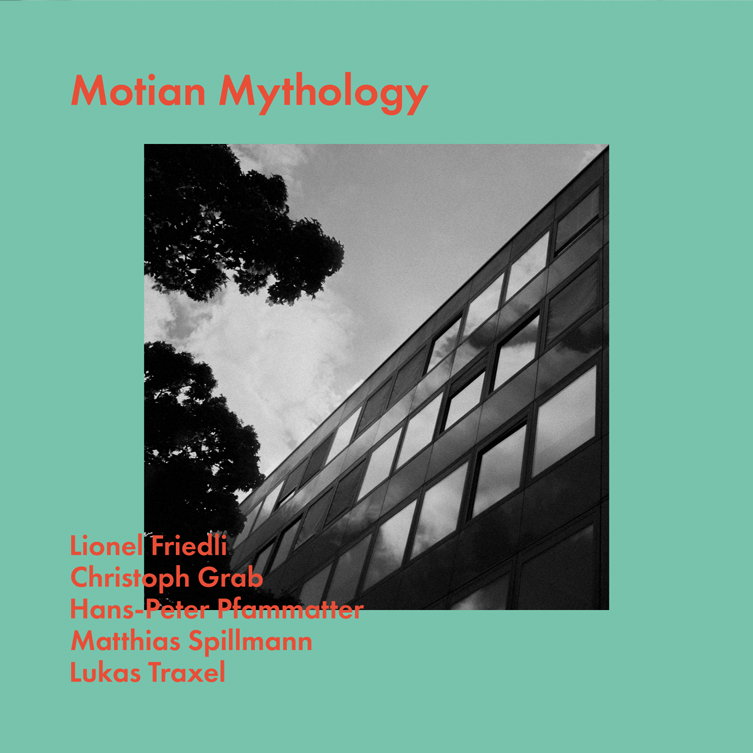
KLACTO7 Christoph Grab Tenor Saxophone.
Matthias Spillmann Trumpet. Fluegelhorn.
Hanspeter Pfammatter Piano.
Lukas Traxel Double Bass.
Lionel Friedli Drums & Cymbals.
Nicole Pfister Artwork.
Release Date 2021 November
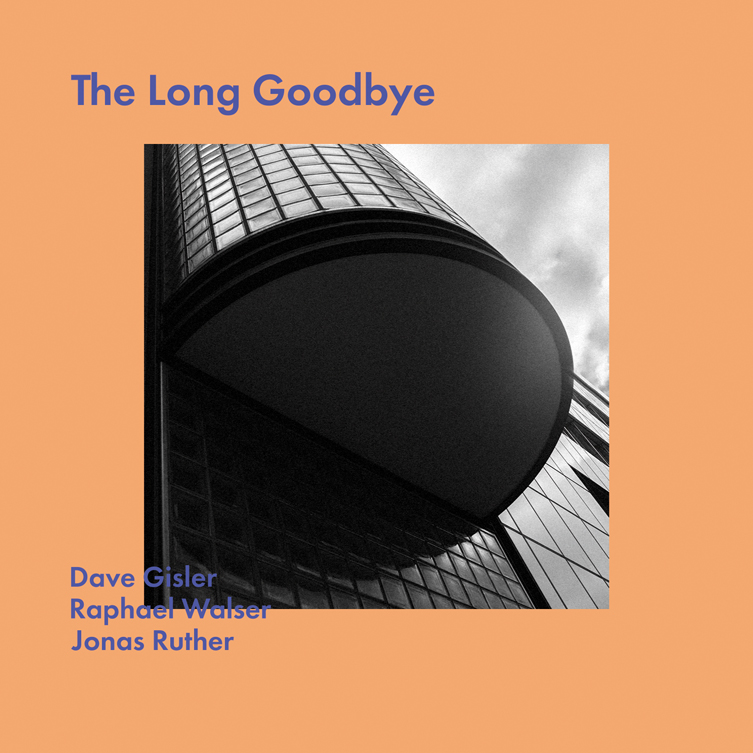
KLACTO6 Dave Gisler Guitar.
Raphael Walser Double Bass.
Jonas Ruther Drums & Cymbals.
Nicole Pfister Artwork.
Release Date 2021 August
LINER NOTES
THE LONG GOODBYE
Sotto Voce.
Sollte man sich darauf einigen können, dass Gelassenheit eine Tugend ist, dann habe ich vor mir eine Tonaufnahme, die diese Tugend hörbar werden lässt.
Gelassenheit ist in jeder Lebenslage eine wertvolle Eigenschaft, ob angeboren oder durch Erfahrung erworben. Schwer zu sagen, bei wem wie. Aber dies ist nebensächlich. Wenn sie sich zeigt, sei es beim Schreiner, beim Arzt, oder wie im vorliegenden Fall bei Musikern, ist sie unschwer zu erkennen.
Ihr Merkmal ist, auf unaufgeregte und undramatische Weise zur Sache zu kommen: Der Schreiner zum Tisch, der Arzt zur Diagnose, der Musiker zum Song. Doch muss sie gezielt zur Sache kommen, denn sonst ist sie die Unverbindlichkeit im falschen Pelz.
Ist der Song eine Ballade, ist die Unaufgeregtheit geradezu gefragt; doch dreht sich die gesamte Aufnahme um Balladen – wohin mit der Aufgeregtheit, dem Drama, dem Spektakel, welches heutzutage erwartet, von Musikern geradezu gefordert wird?
Dave Gisler, Raphael Walser und Jonas Ruther scheinen sich um diese Erwartungen geradezu zu foutieren. Mit Recht, denn es tut jedem der gewählten Songs gut. Gisler widmet sich dem Song; Walser und Ruther, die ihn hörbar gut kennen, wissen, was er gerade braucht, um dem Song die Form zu geben, die ihm in jedem Moment vorschwebt. Und Gisler kennt seine Songs.
Hört man sich genau an, wie die Stücke jeweils enden, bekommt man einen Eindruck der Intimität, die zum jeweiligen Schluss führte – intim bis zur Brüchigkeit, aber ohne Bruch – sotto voce.
Nat Su
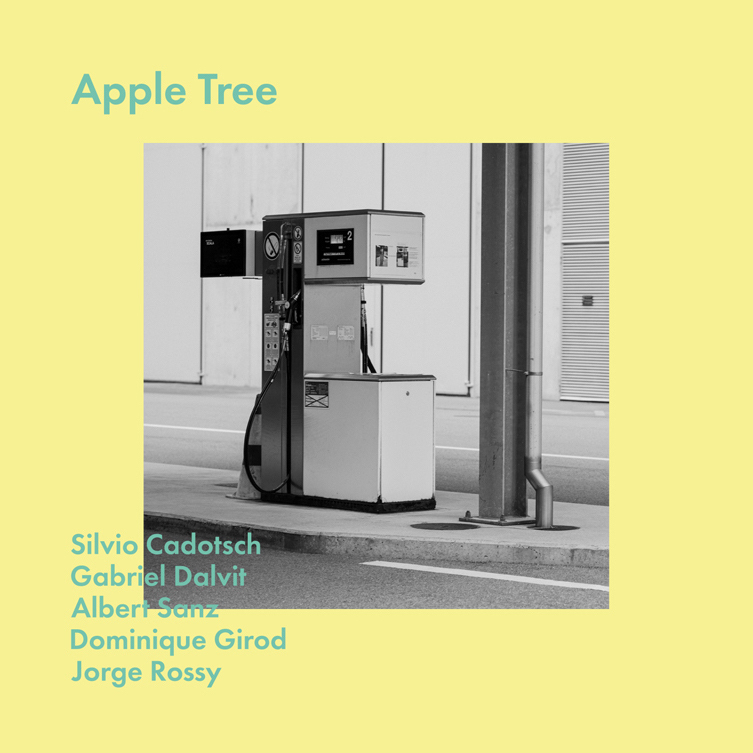
KLACTO5 Silvio Cadotsch Trombone.
Gabriel Dalvit Alto Saxophone.
Albert Sanz Piano.
Dominique Girod Double Bass.
Jorge Rossy Drums & Cymbals.
Nicole Pfister Artwork.
Release Date 2021 February
BUY
LINER NOTES
APPLE TREE
With the exception of Delilah all the tunes on this recording were written in the 1940s and 1950s by Afro-American Jazz Mavericks (Delilah is inspired by the versions of Kenny Dorham and the Max Roach / Clifford Brown Quintet). These creative human beings fought for freedom, dignity, respect and humanity - they belonged to the progenitors of the Civil Rights Movement. This album is dedicated to the contemporary truth seekers Ta-Nehisi Coates («We Were Eight Years in Power») and Zadie Smith («Feel Free: Essays»). (TG)

KLACTO4 Vera Kappeler Piano.
Nicole Pfister Artwork.
Release Date 2020 September
BUY
LINER NOTES
M:MONK
Vera Kappeller “Plays Monk” (Liner Notes) – Noël Akchoté July 2020
“Thelonious, still in his teens, came into town with either an evangelist or a medicine show - I forget which.”
Mary Lou Williams
Round, Square, Dot - Breathe. Push, Expire, Hold on – Drop. Now like back then (it might even have been always), we thought the goal was to do, whereas it's to be (come). Come Sunday (Duke Ellington). Sun-Day, Sonn-tag, Râ, Sun Ra, ... we all come from somewhere, and all of them were rooted in origins, presently Stride Piano (James P., Willie “The Lion”, Jelly Roll, Mary Lou, Fats, Earl “Fatha”, etc...). Here Stood Monk, his whole life. Nowhere comes from Nothing. Stride: a step forward (idiom) - a long, decisive step. You first shape new from old (not knowing yet), until you uncover new is just a sanctuary for old to resist. Precisely because the strand of grass always grows from its midst. Have you Heard? Be not Do.
“The greatest education in the world is watching the masters at work.”
Michael Jackson
“Problems aren’t problems. They’re opportunities.»
Duke Ellington
In Freud's Wo Es war, soll Ich werden, the accent is inevitably on Befall (invariable). To some extend we do what we do not because we have to, but because we cannot stop the question (unroll Sisifos). The split is the rapture (schism) - “Some call me Mr. Ra, some call me mystery.” (Sun Ra). To carry on with the sun and make it brief, Catholics forced the seventh day of the week to become their holiday, and cease with first few centuries habit to all break on Shabbat (I laugh inside my beard). Now if you take every single expression above you will soon see that they basically all equal to same: daybreak, origins, shabbat, shalom (lol). Rejoice!
“My favorite sound: rattle of a train (train track) from far away by night/ and maybe also seeing it on the other side of a lake, small as a toy train.”
Vera Kappeler
Thelonious Monk is an example of an exceptionally uncorrupted creative talent... Make no mistake. This man knows exactly what he is doing in a theoretical way - organized, more than likely, in a personal terminology, but strongly organized nevertheless. We can be further grateful to him for combining aptitude, insight, drive, compassion, fantasy, and whatever else makes the "total" artist, and we should also be grateful for such direct speech in an age of insurmountable conformist pressures, (Liner notes by Bill Evans). In Other words (equals): I now myself live, in every detail, striving for wisdom, while I formerly merely worshipped and idolized the wise (Friedrich
Nietzsche). The Real is where one bangs (Lacan). Vera plays her own (Monk).
“Writing about music is like dancing about architecture.”
Diverse Sources
“The smallest structural unit is the phrase.”
Arnold Schoenberg
So much Vera (Now). A cat is fully a cat, so we failed. We embody the paradox itself, probably lacking of any serious predator (man is to man). The art of playing piano stands in your hips, right elbow and both eyelashes. A bit under your sole too - Q: - What is for you « Free » ? - Vera: I don’t think that freedom really exists - Q: Routine(s): A Typical "Normal" Day in Music for You? - Vera: There is none. - Correct & more Q: How Do You Start/What Starts You? - VK: In life (in general) : imagination, fantasy, dream world, time travels ; In music : concrete orders (from in or outside), concrete goals. One of my all-time favorite quotes ever, since earliest age is and remained this little jewel : “Military music, is to music, what military justice is to justice” (Georges Clemenceau). Vera: I forgot to add: two favorite cities: Bruxelles, Tbilisi – One knows to be precise when needed. Playing music is expressing in a unique language (substitutable to none else, by definition, or just by nature, even I dislike that “natural” term, mostly opposed to the “cultural” one, a main misunderstanding since long before Christ even...).
Monk: You've been making the wrong mistakes.
“It is foolish to think that we will enter heaven without entering into ourselves.”
Teresa of Avila
Read my lips; there is a famous Monk solo for french TV (1969), conducted by Henri Renaud (a fine pianist himself), Monk is in sweat, waiting to start playing, his only reason to be there obviously, present to his absence. On his lips you can read like a mantra “I want to play”, he repeats and repeats. If music is a language, then playing is its real nature.
“The main influence in my youth was my mother.”
Dave Brubeck
I just love her (this) album, by all means, Ba-Lue Bolivar Ba-Lues-Are, all ends and in any particular order. Don't even think of Monk, Crepuscule With Nellie, and let yourself hear Vera's process & struggle to this Epistrophy, here, Ask me Now. Which distance she reaches to the music, where she stands, and how she masters it all. All Great arts are of time (timings & tempi). The chosen ones always had choice. In this album you can constantly hear her decide in flesh, in vivo, I’m talking here of an incarnation of the most concrete body, the one solidly anchored I Mean You, shoulders and skull. Tell your peers and neighbors to remember you the day you'll forget. The knock syndrome, Knoxville Blues. Harsh & weak, sons and daughters, hard-soft-baked & crude Four in One. Where a note is a lifetime sentence, a move, a thought and the whole, a tight play. At Play a.k.a. Alive, Locomotive. Give me a Bb and keep a low A by your side. Stand, jump & vanish. Ruby, my dear... Sixteen, We See. We'll always be too young and old enough. Its never too late, its just too early, Well You Needn’t. - (All Monk’s titles here in italic may never happen in the aforementioned album and that ’s for you to find out, hurrah): Amen, Let's Play.
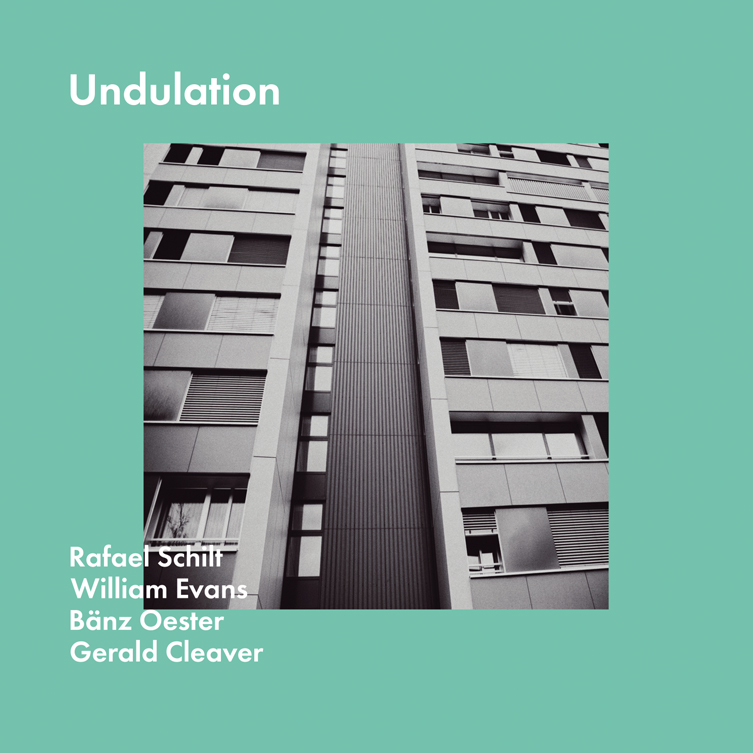
KLACTO3 William Evans Piano.
Rafael Schilt Tenor Saxophone.
Bänz Oester Double Bass.
Gerald Cleaver Drums & Cymbals.
Nicole Pfister Artwork.
Release Date 2020 May
BUY
LINER NOTES
UNDULATION
Was ist eigentlich der Sinn der CD? Unabhängig vom Inhalt: Wer hört denn heute noch Musik über das Medium CD in Zeiten von Modern-Streaming und Retro-Vinyl? Ist dieses Stück Plastik, häufig verpackt in einer Hülle aus Plastik, nicht inzwischen der musikalische Alptraum von globaler Klimadebatte und häuslicher Platzangst? Die Frage begleitet zunehmend: Musikindustrielle schon lange, Musikjournalistinnen und -journalisten länger, Musiker*innen je länger, je mehr. Trotzdem fallen Ausnahmen punkto CD-Produktionen auf, welche die Unsexyness des Mediums relativieren. Beispielsweise die Werke von Veto Records, dem Label des Luzerner Jazzsaxofonisten Christoph Erb, der in Zusammenarbeit mit Kunstschaffenden wunderschön gestaltete Albumartworks herausgibt. Diese sind kleine Kunstwerke, worauf Musik von jungen Schweizer Impro- und Jazzformationen oder Kollaborationen mit der Chicagoer Jazzszene zu finden sind. Ups, jetzt geht’s hier doch um Inhalt – und der ist freilich schwer zu trennen vom reinen Tonträger. Das ebengenannte Beispiel soll aber zeigen, dass eine gute Idee ein Werk oder Medium durchaus relativieren kann. In dieser Nische glänzt auch die Klactovee Edition.
Was ist eigentlich der Sinn der Klactovee Edition? Eine*r oder mehrere Top-Jazzmusiker*innen, die vorher noch nicht miteinander gespielt haben, kommen zusammen in einem Raum und nehmen an einem Tag eine Platte – vorwiegend Standards («Great American Songs» und berühmte Jazz-Originals) – auf. Und zwar wie in den 1950er- und 1960er-Jahren der Musikproduktion, ohne Kopfhörer oder Vorzüge moderner Audio Editing Software, dafür mit alten Mikrofonen und virtuosem Musikhandwerk. Inspiriert von Musikproduzent Don Schlitten und initiiert von Tom Gsteiger, der produzierend und als Programmkurator wirkt, gefällt die unter dem Berner Label ANUK herausgebrachte Reihe einerseits durch ihren Liebhaberstatus – nur 300 CDs werden gepresst. Und andererseits durch die so simple wie geniale Idee, Traditionen am Leben zu halten und rauszugeben. Ausserdem bestechen die Veröffentlichungen visuell dank den schlanken Designs von Nicole Pfister, die zusammen mit Lukas Thoeni auch ANUK betreibt. Ein einfarbiger Rahmen, ein Bild einer Berner Szenerie, und ein ansprechender Schriftzug – fertig ist das Artwork.
Was ist eigentlich der Sinn von «Undulation»? Bis hierher durchgehalten? Super – jetzt wird’s nämlich konkret! Die hier geschriebenen Liner Notes beziehen sich auf die vorliegende Platte «Undulation», das dritte Klactovee-Album unter ANUK. Der Titel ist inspiriert von einem Zitat Ethan Iversons (ein Held von Gsteiger) über das Paul-Bley-Album «The Nearness of You» (mit Billy Hart und Ron McClure): «Billy Hart undulates peacefully beneath the madman as he rummages through the past». «Undulate» bedeutet so viel wie «wogen» oder «wellen», «Undulation» kann mit «Wellenbewegung» oder «Schwingung» übersetzt werden. Und das passt: Schwingen, äh, swingen tun sie nämlich auch, die neun Tracks auf dem gleichnamigen Werk, gespielt von einem wahnwitzigen Quartett, welches zuvor noch nie in dieser Form performt hat.
Was ist eigentlich der Sinn hinter dieser Band? Wenngleich Gsteiger von sich selbst sagt, als Produzent nicht sonderlich in den musikalischen Prozess einzugreifen, zeichnet er im Vorfeld als Kurator der Bandformationen essenziell dafür verantwortlich. Denn mit den Musiker*innen steht und fällt ein solches Projekt. Bei diesem Projekt hat der Jazzexperte sich am klassischen Saxofon-Quartett orientiert, einer Form, mit der Vertreter wie John Coltrane, Sonny Rollins oder Wayne Shorter riesige Erfolge gefeiert haben. Auf der vorliegenden Platte spielen mit Rafael Schilt (sax) und Bänz Oester (b) zwei Schweizer, die auf zwei Amerikaner – William Evans (p) sowie Gerald Cleaver (dr) – treffen. Alle vier sind sie Meister ihres Fachs: Schilt, der Jüngste im Bunde, gehört zu einer neuen, aufregenden Schweizer Jazzszene. Oester ist einer der meistaufgenommenen Kontrabassisten des Landes. Evans und Cleaver kommen beide aus Detroit – einer Stadt mit einer langen und stolzen Jazztradition (mensch denke etwa an Elvin Jones, Tommy Flanagan, Geri Allen oder Craig Taborn). Evans, der in Basel wohnt, ist hierzulande insbesondere durch seine kongeniale Zusammenarbeit mit dem Saxofonisten Andy Scherrer bekannt geworden. Und schlussendlich Cleaver: Kollaborationen mit unzähligen Szenegrössen bilden seine Vita, wobei das Spektrum weit über reinen Jazzjazz hinausgeht; eine Vielfalt, dank welcher der Schlagzeuger praktisch andauernd in der Welt für die Musik unterwegs ist. Vielfalt ist überhaupt das Stichwort an diesem Punkt, wenn mensch sich die Tracklist auf «Undulation» anschaut.
Was ist eigentlich der Sinn dieser Tracklist? Von Rafael Schilt erhielt Tom Gsteiger eine Liste an Standards, die performt werden könnten. Jene wurde von ihm gemeinsam mit den Musikern reduziert auf die Stücke «Blues on the Corner» (McCoy Tyner), «Eronel» (Thelonious Monk & Co.), «Fee-Fi-Fo-Fum» (Wayne Shorter), «Inner Urge» (Joe Henderson), «Invitation» (Bronisław Kaper), «Little Rootie Tootie» (Thelonious Monk), «Duke Ellington’s Sound of Love» (Charles Mingus) und «Up Jumped Spring» (Freddie Hubbard), weiter hat Gsteiger die Monk-Komposition «Oska T.» reingeschmuggelt. Ob es mit Ausnahme des leichten Monk-Fokus einen tieferen Sinn hinter dieser Auswahl gibt oder welche Kriterien zu ihr geführt haben, diese Fragen bleiben auf Seiten des Autors dieser Zeilen offen. Was alles in allem die Spannung ausmacht, ist nebst den Songs das bereits zuvor erklärte Setting: Hier kann im Anschluss nicht rumgeschnippelt oder sonst wie bearbeitet werden. Passiert ein grober Fehler, wie beispielsweise auf einem Rough-Mix-Track, wo ein Solo nicht funktioniert hat wie geplant, dann muss die ganze Aufnahme noch einmal von vorne begonnen werden. Überhaupt, der Rough Mix, also die erste Rohfassung eines Stücks: Er erzählt die ehrlichsten Geschichten, auch bei der vorliegenden Platte. Wo die Band mehr ausprobiert hat und wo nicht, wie sie vorgegangen ist, zeigt sich bei genauerer Betrachtung der verschiedenen Rough Mixes: «Oska T.» wurde beispielsweise nur einmal gespielt, ist dafür aber mit achteinhalb Minuten Spieldauer das längste Stück. Weiter können sich zwischen den Versionen die Tempi der Songs oder die Arrangements (wer soliert wann und wo?) ändern, was «Blues On The Corner» zeigt, der mit vier Takes (davon ein abgebrochener) in unterschiedlichen Geschwindigkeitlevels daherkommt. Auf der Platte ist das aber nicht mehr zu hören, denn hier gibt es nur noch die finalen sechs Stücke.
Was ist eigentlich der Sinn fertig bearbeiteter Songs? Nach den Rough Mixes folgen natürlich die Final Mixes sowie das Mastering. Und dieser finale Schliff macht das Hörerlebnis auf «Undulation» zu einer puren Freude. Der Sound klingt angenehm roh und kraftvoll, wirkt warm und ist versetzt mit emotionaler Spannung. Zu verdanken ist das nebst den Spielkünsten der Musiker den Fertigkeiten Daniel Dettwilers und seiner legendären CADAC Konsole, mit der bereits Queen gearbeitet haben, und über die diverse Medien, unter anderem das Schweizer Fernsehen berichtet haben. Durch diese Kombination und die ganze Prämisse jener Ad-hoc-Session gewinnen die Standards eine angenehme Raffinesse und ein volles Hörgefühl. Satt klingt beispielsweise «Blues on the Corner», wo gleich die ganze Küche in den Song einsteigt und unaufgeregt-souverän wie ein Zug durchfährt – ähnlich fett wirkt «Fee-Fi-Fo-Fum». Die singenden Toms auf «Duke Ellington’s Sound of Love» setzen wiederum zum schlankeren Start und Schluss des Standards ein Statement und lassen das Schlagzeug strahlen, ergänzt durch ein zartes Oberton-Outro-Geimerl vom Saxofon. Jenes ergänzt sich in schöner Abwechslung punkto Solos mit der Klavierstimme, welche ebenfalls ihre time to shine nutzt – gerade beim kontrastierenden, virtuosen «Up Jumped Spring»-Intro. Unter all diese Melodien legen Bass und Schlagzeug ein souveränes Rhythmus-Fundament. Manchmal fast ein wenig zu souverän und klassisch, zumindest nach dem Geschmack des hier Schreibenden. Um diesen Eindruck zu durchbrechen, braucht es eben schon Monk – und hier fährt das Quartett zu spielerischen Höchstleistungen auf. Was möchte mensch zuerst hervorheben? Das Saxofon-Schlagzeug-Duett auf «Little Rootie Tootie» ist definitiv gross – aber der heimliche Star unter diesen hier gespielten Standards ist zugleich der Behemoth auf der Tracklist: «Oska T.» und danach «Eronel», vereint zu einem epischen 15-Minuten-Track, fräsen alle Ebenen grandioser Jazzmusik ab. Ein unkonventioneller Einstieg, wohl ganz im Sinne des Komponisten, das stetige Spiel mit der Repetition, der freie Übergang zum Folgestück, welcher die Energie gleich weiter ausbaut: eine Macht mit der Essenz des Jazz – Improvisation.
Was ist eigentlich der Sinn von Improvisation? Sie ist das Salz in der Suppe, sorgt für Leben und Vielfalt in dieser Musik und verleiht ihr eine Komponente, welche Jazz von anderen Stilen unterscheidet – sofern mensch denn in Schubladen denken will. Arno Troxler, Chef vom Jazz Festival Willisau, hat das in einem Interview einmal wie folgt beschrieben: «Unter dem Strich ist Improvisation das Normalste, was es gibt. Wenn wir in einer halben Stunde noch einmal das gleiche Gespräch führen, kommt dieses total anders raus. Überhaupt improvisieren wir eigentlich rund um die Uhr im Leben.» Alles in allem erzählen solche Beobachtungen viel über die Arbeit im Studio, über Präferenzen sowie Einspielprozesse und über den Austausch unter Musiker*innen. Vielleicht harzen die Aufnahmen die ganze Zeit lang und gewinnen nie an Drive. Oder aber das Gegenteil passiert: ein Strom an Energie sowie Emotionen entsteht – im besten Falle konserviert auf Platte, als Zeitdokument. Und das ist «Undulation» denn auch geworden.
Stoph Ruckli ist Musiker und Musikkritiker und lebt in Luzern. Als E-Bassist wird er zwar nie auf einer Ausgabe der Klactovee Edition spielen dürfen, toll findet er das Projekt aber trotzdem.

KLACTO2 Bill Carrothers Piano.
Rafael Schilt Tenor Saxophone.
Raphael Walser Double Bass.
Jonas Ruther Drums & Cymbals.
Nicole Pfister Artwork.
Release Date 2019 November
BUY
LINER NOTES
Albert Ayler, Emil Boyd, Tadd Dameron, Joe Lovano, Harvey Pekar, Jimmy Scott: They all grew up in Cleveland. This album is dedicated to these creative human beings and to their place of birth. And also to Ernie Henry who made some great recordings with Mr. Dameron.
(Thanks to the CD «Quartets» by Joe Lovano I learned the following: Emil Boyd and Joe Lovano's father, Tony "Big T" Lovano, were friends. Emil Boyd died in 1994. Lovano's father was a barber but also played the tenor saxophone. In his youth he was a big admirer of Tadd Dameron, later on he played with Albert Ayler.)
Tom Gsteiger
Harvey Diamond It could Happen To You
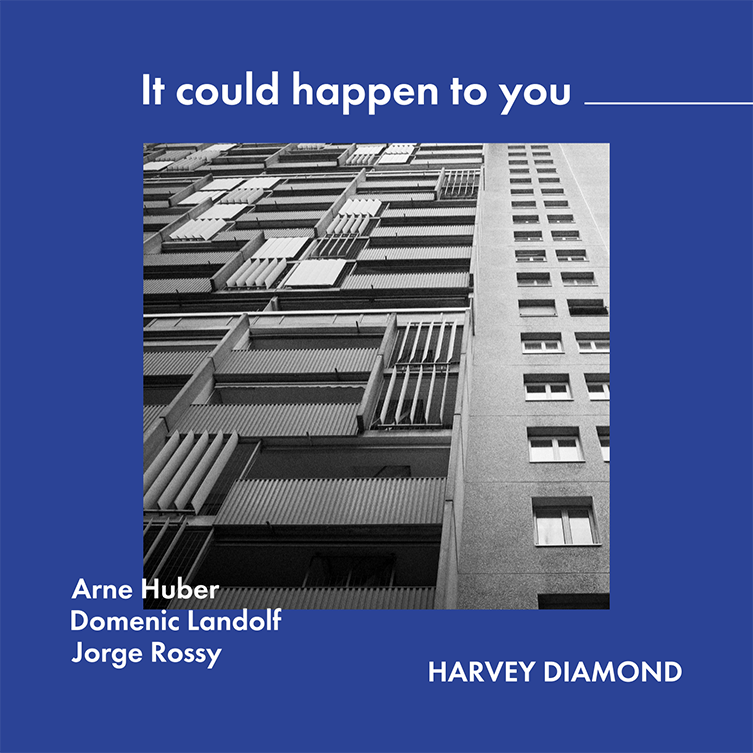
KLACTO1 Harvey Diamond Piano.
Arne Huber Double Bass.
Domenic Landolf Tenor Saxophone.
Jorge Rossy Drums. Paiste Cymbals.
Nicole Pfister Artwork.
Release Date 2019 July
BUY
LINER NOTES
HERE’S HARVEY
Is pianist Harvey Diamond a late bloomer? Or has he, like many jazzmen, somehow been lost in the shuffle between the giants and the journeymen of the music? It Could Happen to You, just Diamond’s third album, begs these questions.
It’s not as if Diamond has been off the jazz map (although he does not have the Internet). For 71 years (he was born in 1942), he’s played a myriad of clubs, concert halls, and jam sessions, played behind a lot of singers, and taught and studied, on both U.S. coasts. He was a student of the great iconoclastic improviser Lennie Tristano for ten years.
“What attracted me to jazz in the first place was just the idea of improvising and playing what comes into your head. That’s the difficult part, but it’s also the beautiful part. Once you play an improvisation, with a spark flowing from intuition, then it’s gone and you can’t get it back, for the simple reason that you can’t think and play at exactly the same time. The work came from our heads but the key was forgetting about that and just playing, getting the thoughts under your hands. And that comes with a lot of practice.”
Or, to paraphrase Lee Konitz, It takes a lot of preparation to play unprepared.
“I played all through college, then came to Boston, and I remember playing in a club with Alan Broadbent, who told me about Tristano. Alan and I started going down to New York together to hear him. I say that seeing Lennie was a tremendous turning point in my life. I can’t put my finger on it. Whatever music you heard, you had to get it through your ears … I stopped studying with Lennie two days before he passed.
“Jazz comes down to sound and feeling, it’s not just a style,” he said after recording this album. “I always remember Lennie saying three little words: ‘Just play music.’ What I got from him is that everybody’s different. There’s no one way to learn. Don’t rush, so that you can really take the music in. Lennie’s thing was to help you express whatever it was that you heard. It was totally related to the songs. Every week for about 10 years I travelled from Boston to New York for one lesson with him. I wouldn’t go forward until I had it down. One of the greatest things about Lennie is that you always knew he was on your side. My lesson was at four in the afternoon, and even if it was snowing and I’d get there five hours late, he was there for me.
Lennie wasn’t strict but you really had to get down and know. There’s some kind of magic about those eighty-eight keys, that’s a lot of territory to cover, and to stretch out.
“People are different, nobody learns the same way. The way Lennie learned how to teach was by listening to the people he taught. Some teaching is too analytical. The great jazz musicians learned from each other, listening to what came before them.”
Diamond had a quartet as far back as junior high school, in Fresno, California, playing high school dances, 50s rock ‘n’ roll and eventually standards. “We were all about 14 and won some contest, so we were flown out to Hollywood to appear on the Ted Mack Original Amateur Hour radio show. It featured all kinds of different acts and listeners would vote for their favorite. The guy who won had painted a face on his abdomen with a top hat and wiggled his stomach! So we came in second!”
He has always been his own man, a musician’s musician, and that also goes for his personal environs in Boston. “I almost moved to New York in the mid-70s. I felt like it, and I sat on it for three months, but then the feeling went away. I loved playing there because I was seeing musicians I hadn’t seen in 30-odd years. But I didn’t want to actually live there.”
Finally he entered the recording studio for two albums: The Harvey Diamond Trio, with Marcus McLaurine and Satoshi Takeishi (2015), and Fair Weather with Cameron Brown (2018).
The list of admirers grew, including singer Sheila Jordan (“He plays from his heart and totally disappears into the song. He's a real joy to sing with”), bassist Cameron Brown (“a unique and brilliant musician: a pianist's pianist with a remarkable touch, unimpeachable technique and enormous dynamic range. A creative and unpredictable improvisor, Harvey's roots go back to Lennie Tristano and Bill Evans, spiced with just a touch of Cecil Taylor. He draws the audience into his world and holds it spellbound”), Vermont Jazz Center director Eugene Uman (“a complete absence of pretension … his interpretations are egoless reflections of where he is in the moment, presented through a lens of years of study and experience”), and saxophonist Dave Liebman (“a master teacher and player who has positively influenced legions of musicians over the years”).
It Could Happen to You, Diamond's most fully realized record, came about in a round-about way. Producer Tom Gsteiger says: “I just came across his name recently, just before the recording. I had read an article about Michael Kanan, another pianist I like very much, who was a student of Harvey’s for about 20 years. I started to check him out on the Internet but there was very little on him, just some live recordings where the sound quality is not so good.“ Originally, Gsteiger says, he had always wanted to make a standards record with Swiss saxophonist Domenic Landolf. After hearing Harvey, I thought he could be a good mix with Domenic. “Domenic is one of my favorite tenor players today, a very interesting player who has a lot of influences but puts them together in a very original and organic way, has great ears, and really knows the standards. It was Harvey who chose the standards, so it was important to have a sax player who enjoyed playing them. Domenic can be very melodic but he can be abstract, too. I wanted to bring him together with a pianist who was maybe slightly more conservative yet very open to new ideas.”
Gsteiger also asked drummer Jorge Rossy, late of Brad Mehldau’s trio and who lives near Barcelona and teaches in Basel (Switzerland), if he wanted to record with Diamond, with whom he played at jam sessions for about three years while studying in Boston. This album represents a reunion between the two of them after not seeing each other for over 20 years.
“I hadn't seen Harvey since 1991,” says Rossy, “and never imagined that such an opportunity to play and record with him would arise.“
“It all worked out great,” says Gsteiger, whose mission has always been to record under-recorded musicians: “There were very few takes, Harvey was very enthusiastic during the session. He would start playing another tune while the other musicians were talking about the tune they’d done before. It was a very relaxed session.”
The result is a true labour of love, a chance to discover a great musician who contributes mightily to jazz’s status as a truly original art form.
Juan Rodriguez, Montréal
When Tom Gsteiger called me to ask me if I could play with Harvey Diamond I was very pleasantly surprised. I hadn't seen Harvey since 1991 and never imagined that such an
opportunity to play and record with him would arise because he rarely comes to Europe. I thought Tom's idea of teaming him up with Domenic Landolf was also great; he happens to be one of my favorite musicians and I thought he would be able to connect with Harvey right away.
The recording session felt totally relaxed and inspiring. It really provided an opportunity for me to reconnect with Harvey whose sound is completely his own but also very familiar to me since I played a lot with him in my most formative years. I think his aesthetic and idiosyncrasies are part of a very loved comfort zone for me where unpredictability meets beauty and swing.
All I did as a drummer was to get inside each tune and stay mindful to not miss the conversation that ensued from the interplay between the four of us.
Arne Huber was a perfect match for the occasion: the clarity and centrality of his beat, his beautiful sound and his egoless approach made the music flow with ease and in complete synergy with everyone else.
Domenic was just as liquid as usual, totally aware of each sound around him and playfully creating a musical discourse that is just as open as it is cohesive. All of it with a totally unpretentious sense of humor and sensibility.
Harvey is a pure, lyrical improviser with his very own
language and an amazing flow of ideas, colors and swing.
I have to say also that the conditions of the recording were ideal. It was an unforgettable meeting of musical soul-mates; the magic arrives on the first beat and stays around till the final echoes of the last note.
Jorge Rossy, Begues / Barcelona
Harvey Diamond’s playing is unique. After studying for several years with jazz innovator Lennie Tristano, he went on to form a powerful pianistic voice: bold, lyrical, sometimes abstract, sometimes tender, but always swinging. One cannot easily categorize his style because he is deeply in the moment when he plays. He goes wherever his heart and imagination lead him. This is why listeners are so drawn to him. He expresses a rare depth of feeling with total honesty and without ego or self-consciousness. He is truly an artist.
Michael Kanan, New York